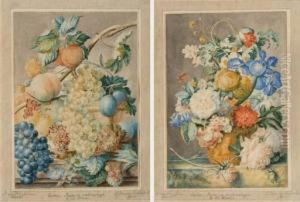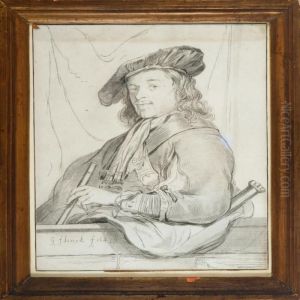Cornelis Ploos Van Amstel Paintings
Cornelis Ploos van Amstel was a notable figure in the 18th-century Dutch art world, not just as an artist but also as an art collector, dealer, and an influential printmaker. Born on March 4, 1726, in Weesp, Netherlands, he grew up in a time when the Dutch Republic was a vibrant center for the arts, albeit past its Golden Age peak. Ploos van Amstel showed an early interest in art, but unlike many of his contemporaries, he did not limit himself to painting or drawing. Instead, he immersed himself in the broader art world, developing a particular passion for collecting and preserving works of art.
Throughout his life, Ploos van Amstel was deeply involved in the artistic community. He was a co-founder of the Amsterdam Drawing Society, an institution aimed at promoting the arts and supporting artists. His contributions to the field of printmaking were particularly significant; he innovated techniques that improved the quality and accessibility of prints, making it easier to reproduce and disseminate artworks. These techniques were crucial in a time when printmaking was one of the primary methods for the public to engage with art.
His collection was vast and eclectic, encompassing a wide range of styles and periods. Ploos van Amstel was known for his discerning eye and the ability to recognize the potential in overlooked or undervalued works. His efforts in collecting and documenting artworks played a crucial role in preserving Dutch art history for future generations.
Aside from his contributions to collecting and printmaking, Cornelis Ploos van Amstel was also an advocate for artists' rights and worked towards improving their social and economic status. He was instrumental in establishing copyright laws that protected artists and their creations, a relatively novel concept at the time.
Cornelis Ploos van Amstel passed away on December 15, 1798, in Amsterdam. His legacy lives on through his contributions to the art world, particularly in the fields of printmaking and art collection. His works and collected pieces are still studied and admired today, showcasing his lasting impact on the preservation and appreciation of Dutch art.











